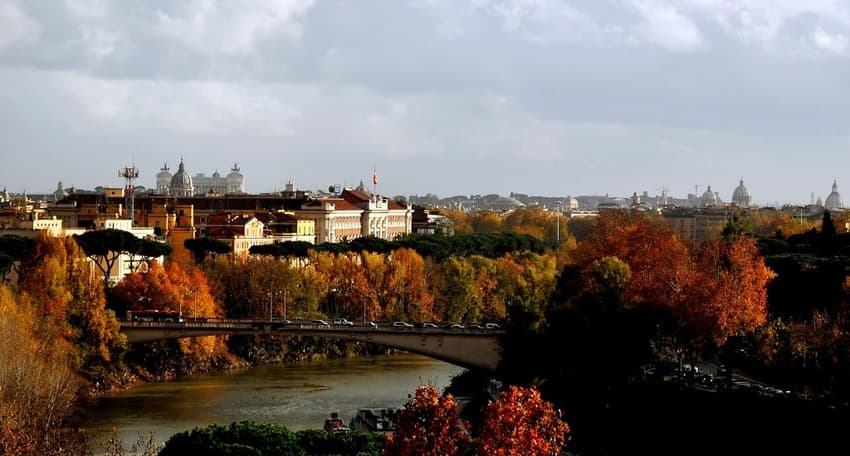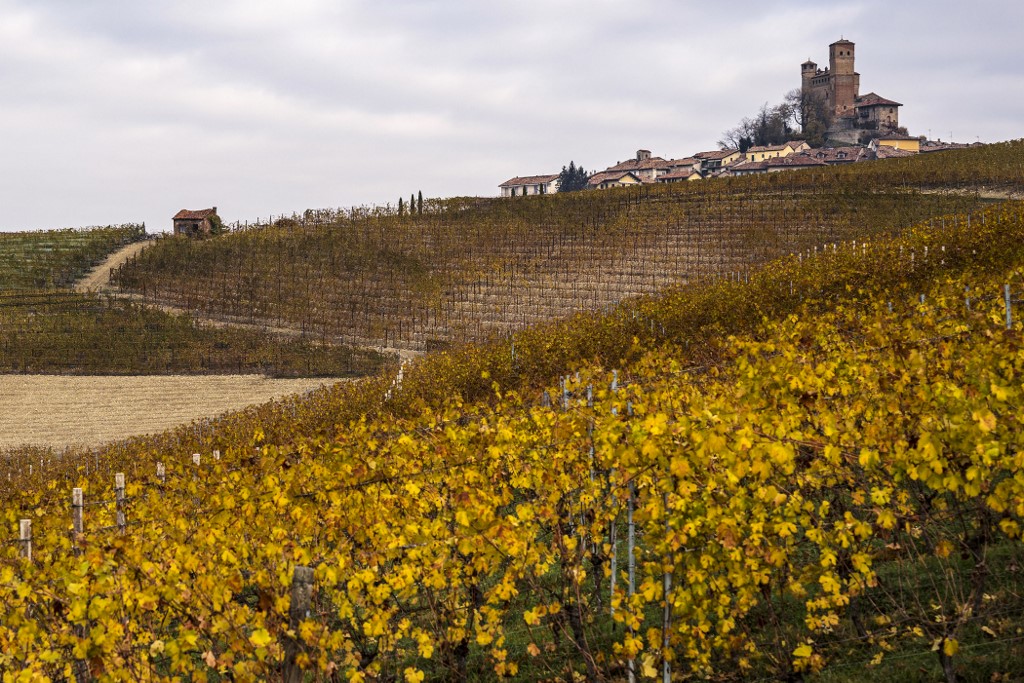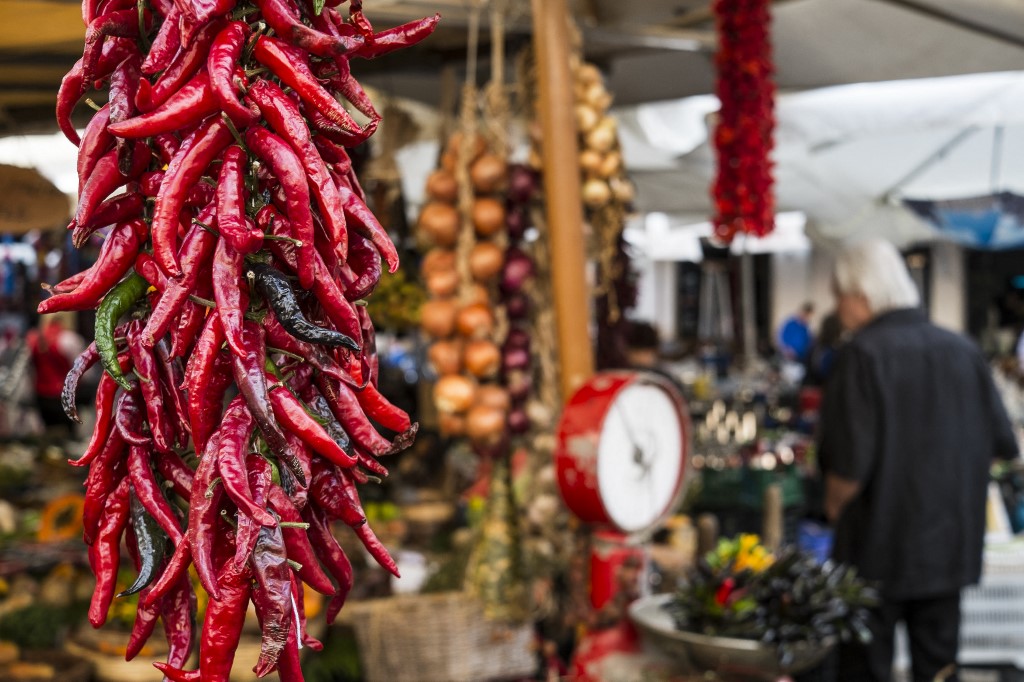The essential vocabulary you'll need for autumn in Italy

If you're spending the autumn months in Italy, there are some key words and phrases you'll want to add to your repertoire.
Foglie
Autumn is arguably one of the best times to visit Italy.
And that’s not simply because it’s when the summer heat wanes and the most popular attractions become less crowded, but also because landscapes get a breathtaking new look as the foglie (leaves) turn dark red, orange and yellow.
Fa fresco!
One of the best ways to strike up a conversation with an Italian, whether that be a neighbour, a colleague or simply a fellow queuer at the local pasticceria (pastry shop), is to comment on the weather.
And for this time of the year, fa fresco (‘it’s chilly’) is the phrase you’ll likely need the most.
READ ALSO: Seven reasons autumn is the best time to visit Italy
But if you’re looking to use the expression like a true local, make sure you say it with a look of surprise and slight apprehension painted across your face, almost as if you’d never seen temperatures drop in autumn before.
Colpo d’aria
The autumn months in Italy have many delights, but this time of year also brings its own particular dangers, at least according to Italians.
In fact, you may find yourself being warned about the colpo d’aria, the dreaded ‘blast’ of cold air which Italians invariably identify as the main cause of all sorts of physical maladies experienced in autumn, from a stiff neck to a back sprain to an upset stomach.

As temperatures start to drop, people in Italy wrap up warm to avoid the so-called 'colpo d'aria'. Photo by Vincenzo PINTO / AFP
And if you pay heed to Italian grandmas’ lore, failing to wrap up warm as soon as temperatures drop below 20C, leaving the house with capelli bagnati (wet hair) and opening a window while sweaty are all common ways to fall victim to the infamous colpo.
Cambio armadio
The summer-to-autumn wardrobe switch is serious business in Italy, as people around the country scramble around the house for entire weekends to see to the lofty task.
Out go shorts, short-sleeved shirts and tees, flip-flops and sandals; in come felpe (sweatshirts), maglioni (jumpers), pantaloni lunghi (long trousers) and giacche a vento (windbreakers).
READ ALSO: Why the great autumn wardrobe switch is serious business in Italy
The maglia della salute (literally ‘health shirt’), a wool-blend or lace-trimmed vest largely considered as the most tried-and-tested defence against the colpo d’aria, also makes a reappearance.
Scampagnata
Autumn is the time of the year where people around the country collectively rediscover the pleasures of the scampagnata (literally ‘countryside wandering’), a weekend trip out of town that’s far more than just a break from the hustle and bustle of daily life.
READ ALSO: 'La scampagnata': What it is and how to do it the Italian way
Most locals see scampagnate as a golden opportunity to explore nearby rural areas and discover lesser-known sites in the company of family or friends, but also as a chance – or perhaps an excuse - to feast on local specialties in traditional taverns and trattorias.

Trips to the countryside, or 'scampagnate', are one of Italians' favourite weekend activities in the autumn months. Photo by MARCO BERTORELLO / AFP
Ottobrata
While October and November are the rainiest time of year for most Italian regions, this doesn’t mean that the country lies in a permanent state of gloom and darkness for the entire autumn season.
In fact, spells of sunny weather and generally warm temperatures are so frequent in October that there’s even a name for them: ottobrate.
And, of course, an ottobrata is just about the perfect time to go on a scampagnata.
Sagra
The autumn months are the best time of the year to attend a sagra, a type of harvest festival or fair centred around one particular food or drink item local to the town hosting it.

Autumn is the best time of the year to attend one of Italy's countless local food festivals, or 'sagre'. Photo by ANDREAS SOLARO / AFP
Sagre around the country don’t follow a precise format: they could last for several weeks or one day, and might consist of anything from raucous celebrations with music and dancing to more relaxed tasting experiences amid food stalls and wooden benches.
But what all events have in common is the focus on fresh local produce, and the assurance that you won't leave unsated.
Zucche, funghi and castagne
Italian cuisine is very much rooted in fresh seasonal produce, which means that as seasons change, some dishes and recipes are temporarily put to one side, while some others make a welcome reappearance.
Zucche (pumpkins), funghi (mushrooms) and castagne (chestnuts) are all staples of Italians’ diet as well as restaurant menus in autumn as they are used in a variety of dishes, from main courses (pumpkin risotto, mushroom tagliatelle) to sides (polenta and mushrooms, roasted pumpkin) to desserts (chestnut flour cake, pumpkin pie).
Comments
See Also
Foglie
Autumn is arguably one of the best times to visit Italy.
And that’s not simply because it’s when the summer heat wanes and the most popular attractions become less crowded, but also because landscapes get a breathtaking new look as the foglie (leaves) turn dark red, orange and yellow.
Fa fresco!
One of the best ways to strike up a conversation with an Italian, whether that be a neighbour, a colleague or simply a fellow queuer at the local pasticceria (pastry shop), is to comment on the weather.
And for this time of the year, fa fresco (‘it’s chilly’) is the phrase you’ll likely need the most.
READ ALSO: Seven reasons autumn is the best time to visit Italy
But if you’re looking to use the expression like a true local, make sure you say it with a look of surprise and slight apprehension painted across your face, almost as if you’d never seen temperatures drop in autumn before.
Colpo d’aria
The autumn months in Italy have many delights, but this time of year also brings its own particular dangers, at least according to Italians.
In fact, you may find yourself being warned about the colpo d’aria, the dreaded ‘blast’ of cold air which Italians invariably identify as the main cause of all sorts of physical maladies experienced in autumn, from a stiff neck to a back sprain to an upset stomach.

And if you pay heed to Italian grandmas’ lore, failing to wrap up warm as soon as temperatures drop below 20C, leaving the house with capelli bagnati (wet hair) and opening a window while sweaty are all common ways to fall victim to the infamous colpo.
Cambio armadio
The summer-to-autumn wardrobe switch is serious business in Italy, as people around the country scramble around the house for entire weekends to see to the lofty task.
Out go shorts, short-sleeved shirts and tees, flip-flops and sandals; in come felpe (sweatshirts), maglioni (jumpers), pantaloni lunghi (long trousers) and giacche a vento (windbreakers).
READ ALSO: Why the great autumn wardrobe switch is serious business in Italy
The maglia della salute (literally ‘health shirt’), a wool-blend or lace-trimmed vest largely considered as the most tried-and-tested defence against the colpo d’aria, also makes a reappearance.
Scampagnata
Autumn is the time of the year where people around the country collectively rediscover the pleasures of the scampagnata (literally ‘countryside wandering’), a weekend trip out of town that’s far more than just a break from the hustle and bustle of daily life.
READ ALSO: 'La scampagnata': What it is and how to do it the Italian way
Most locals see scampagnate as a golden opportunity to explore nearby rural areas and discover lesser-known sites in the company of family or friends, but also as a chance – or perhaps an excuse - to feast on local specialties in traditional taverns and trattorias.

Ottobrata
While October and November are the rainiest time of year for most Italian regions, this doesn’t mean that the country lies in a permanent state of gloom and darkness for the entire autumn season.
In fact, spells of sunny weather and generally warm temperatures are so frequent in October that there’s even a name for them: ottobrate.
And, of course, an ottobrata is just about the perfect time to go on a scampagnata.
Sagra
The autumn months are the best time of the year to attend a sagra, a type of harvest festival or fair centred around one particular food or drink item local to the town hosting it.

Sagre around the country don’t follow a precise format: they could last for several weeks or one day, and might consist of anything from raucous celebrations with music and dancing to more relaxed tasting experiences amid food stalls and wooden benches.
But what all events have in common is the focus on fresh local produce, and the assurance that you won't leave unsated.
Zucche, funghi and castagne
Italian cuisine is very much rooted in fresh seasonal produce, which means that as seasons change, some dishes and recipes are temporarily put to one side, while some others make a welcome reappearance.
Zucche (pumpkins), funghi (mushrooms) and castagne (chestnuts) are all staples of Italians’ diet as well as restaurant menus in autumn as they are used in a variety of dishes, from main courses (pumpkin risotto, mushroom tagliatelle) to sides (polenta and mushrooms, roasted pumpkin) to desserts (chestnut flour cake, pumpkin pie).
Join the conversation in our comments section below. Share your own views and experience and if you have a question or suggestion for our journalists then email us at [email protected].
Please keep comments civil, constructive and on topic – and make sure to read our terms of use before getting involved.
Please log in here to leave a comment.